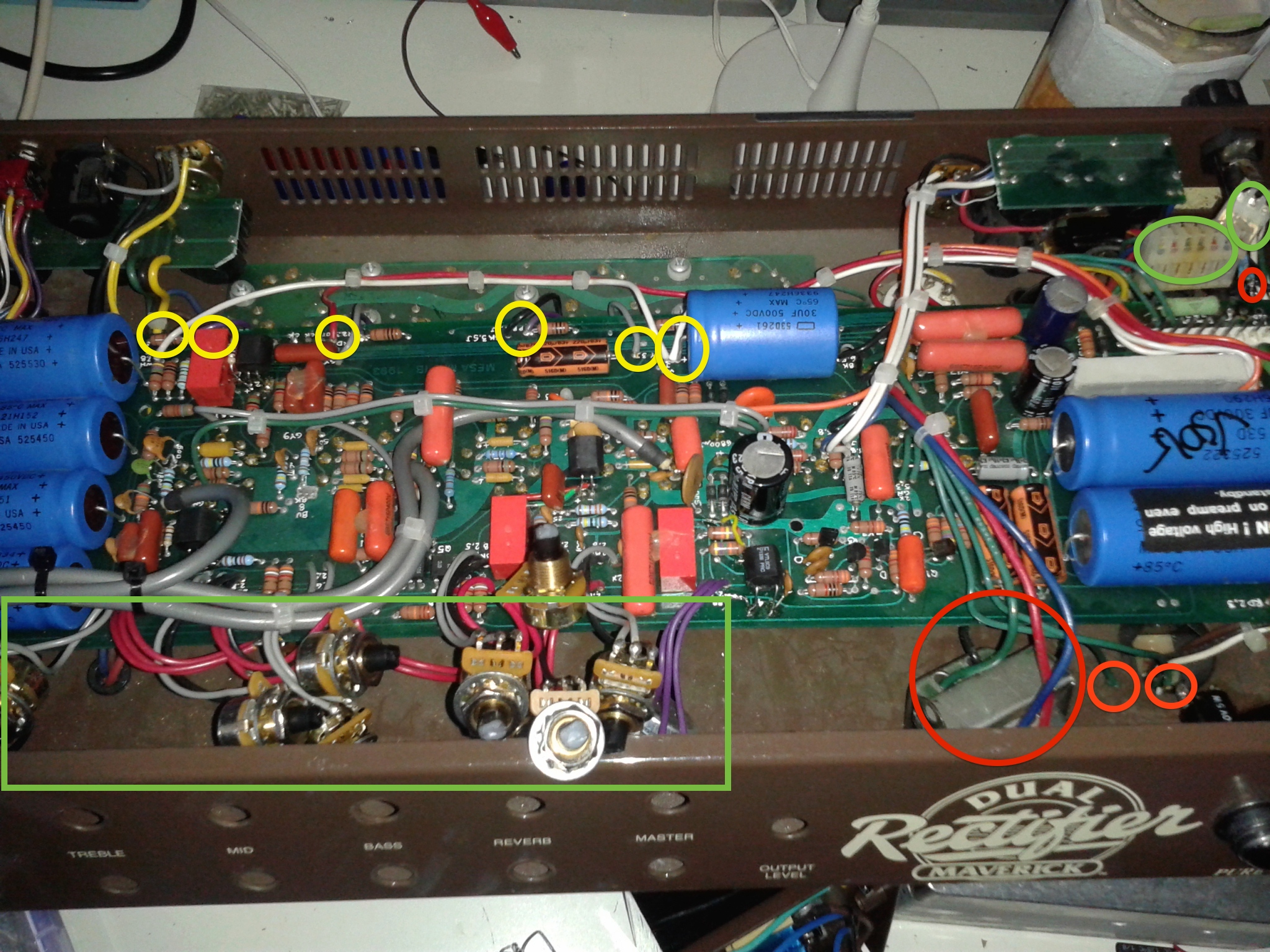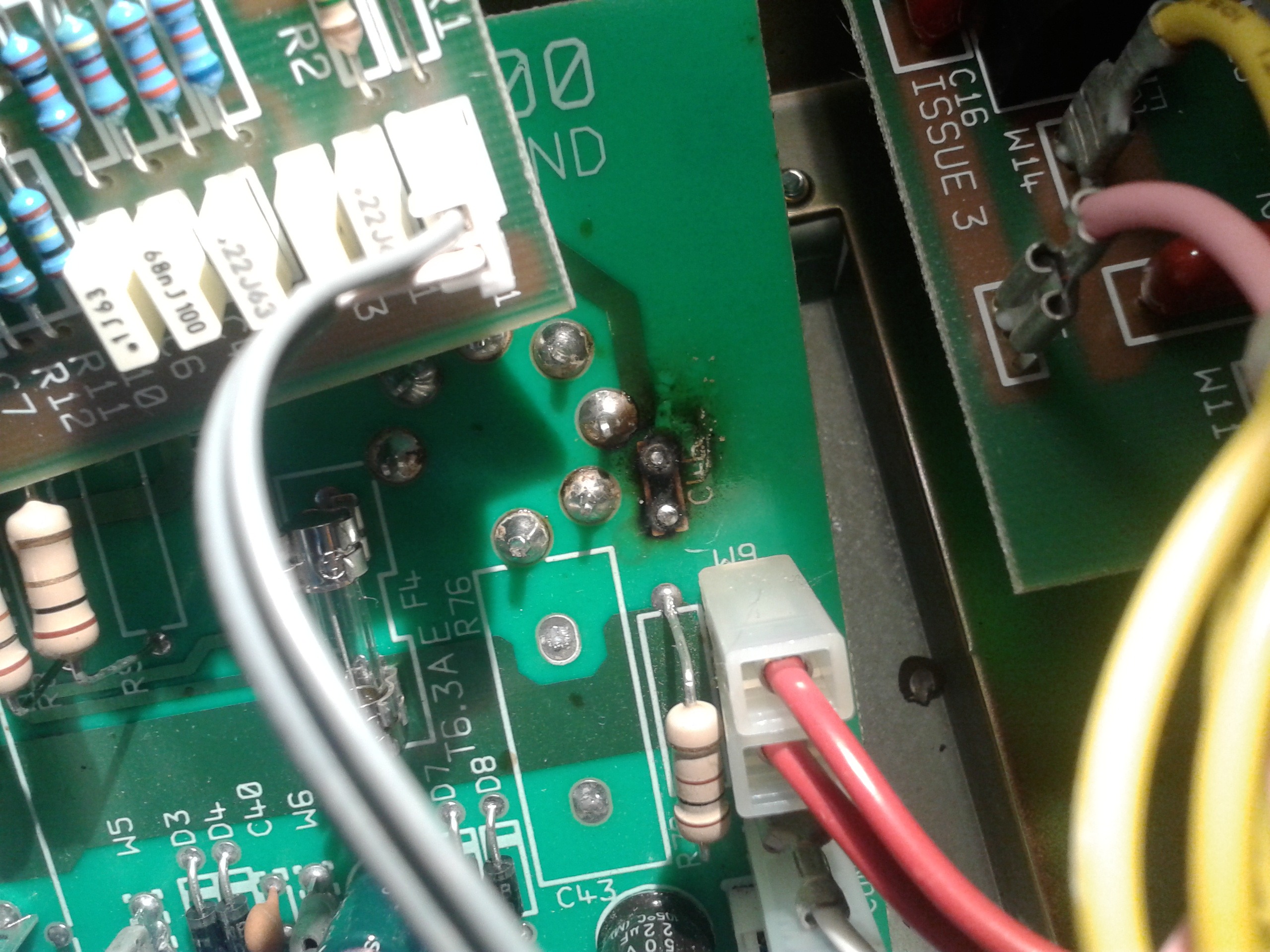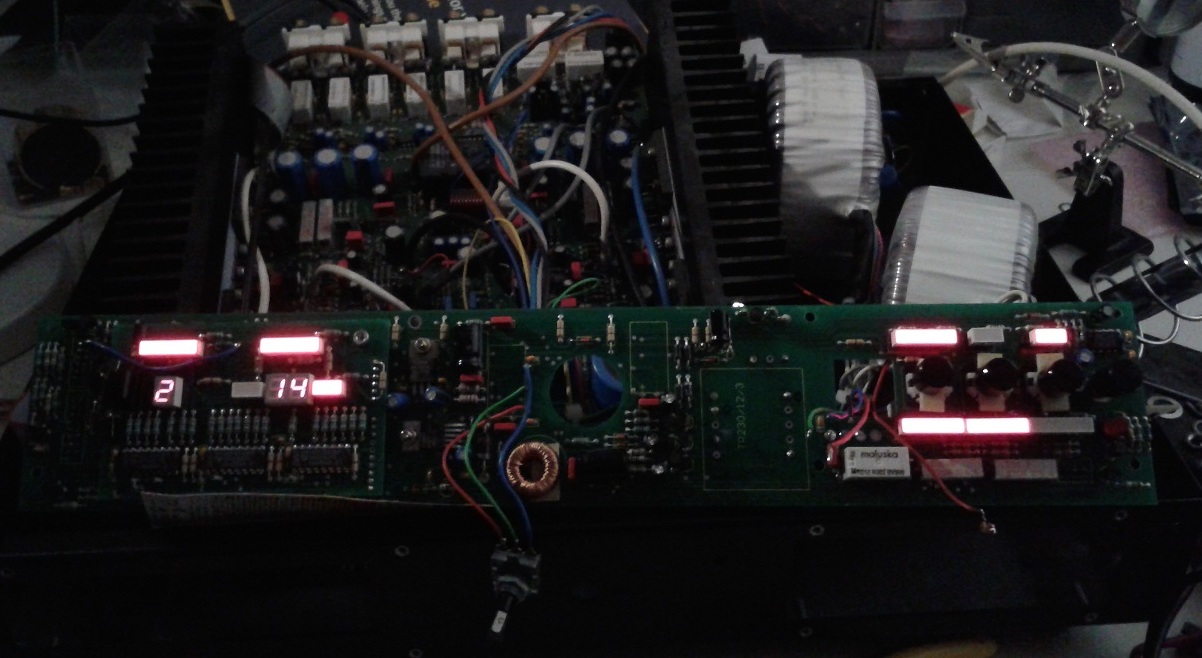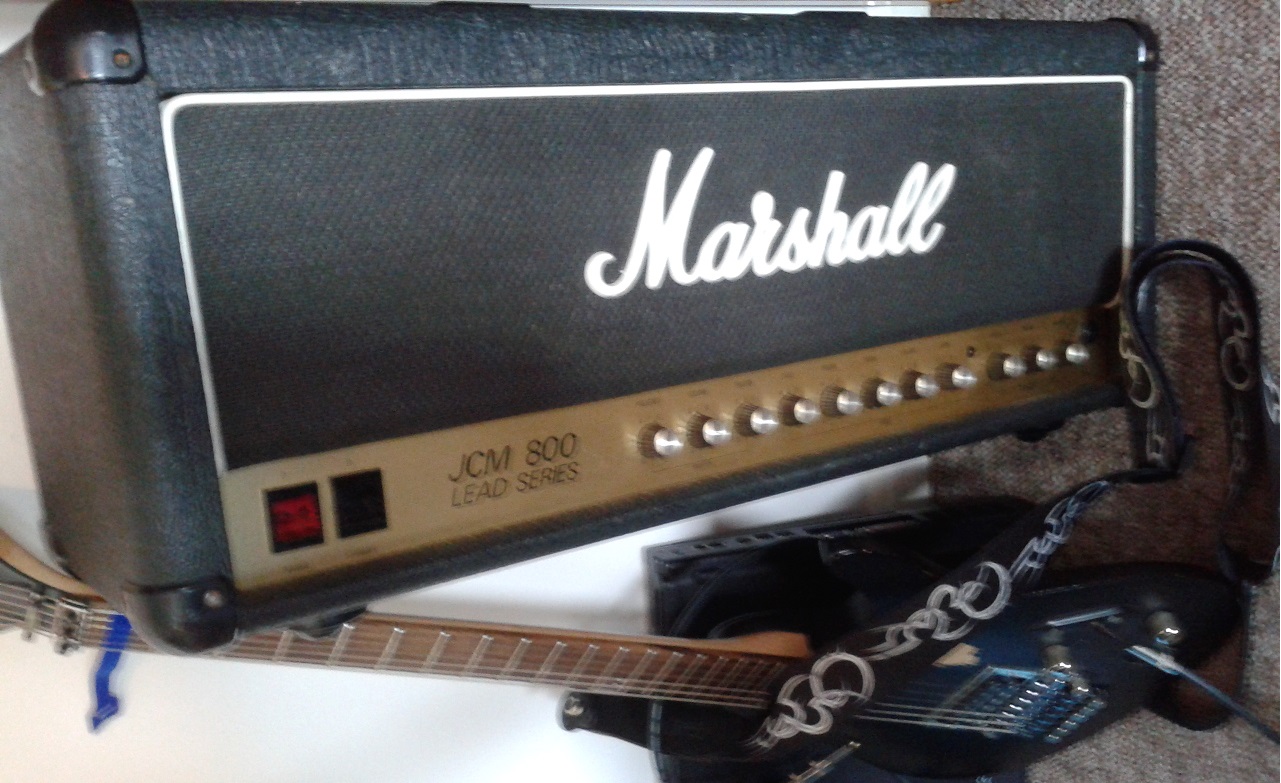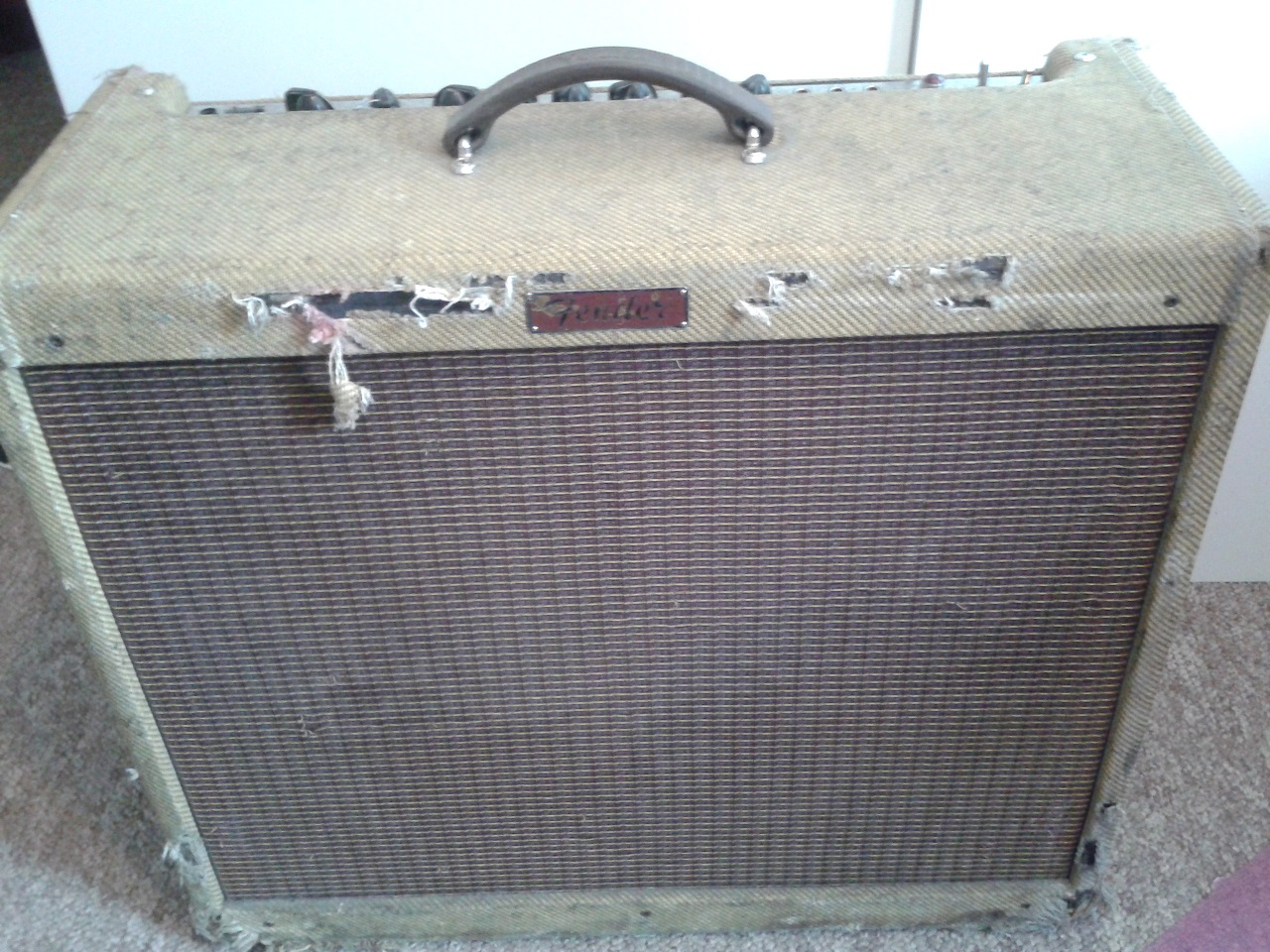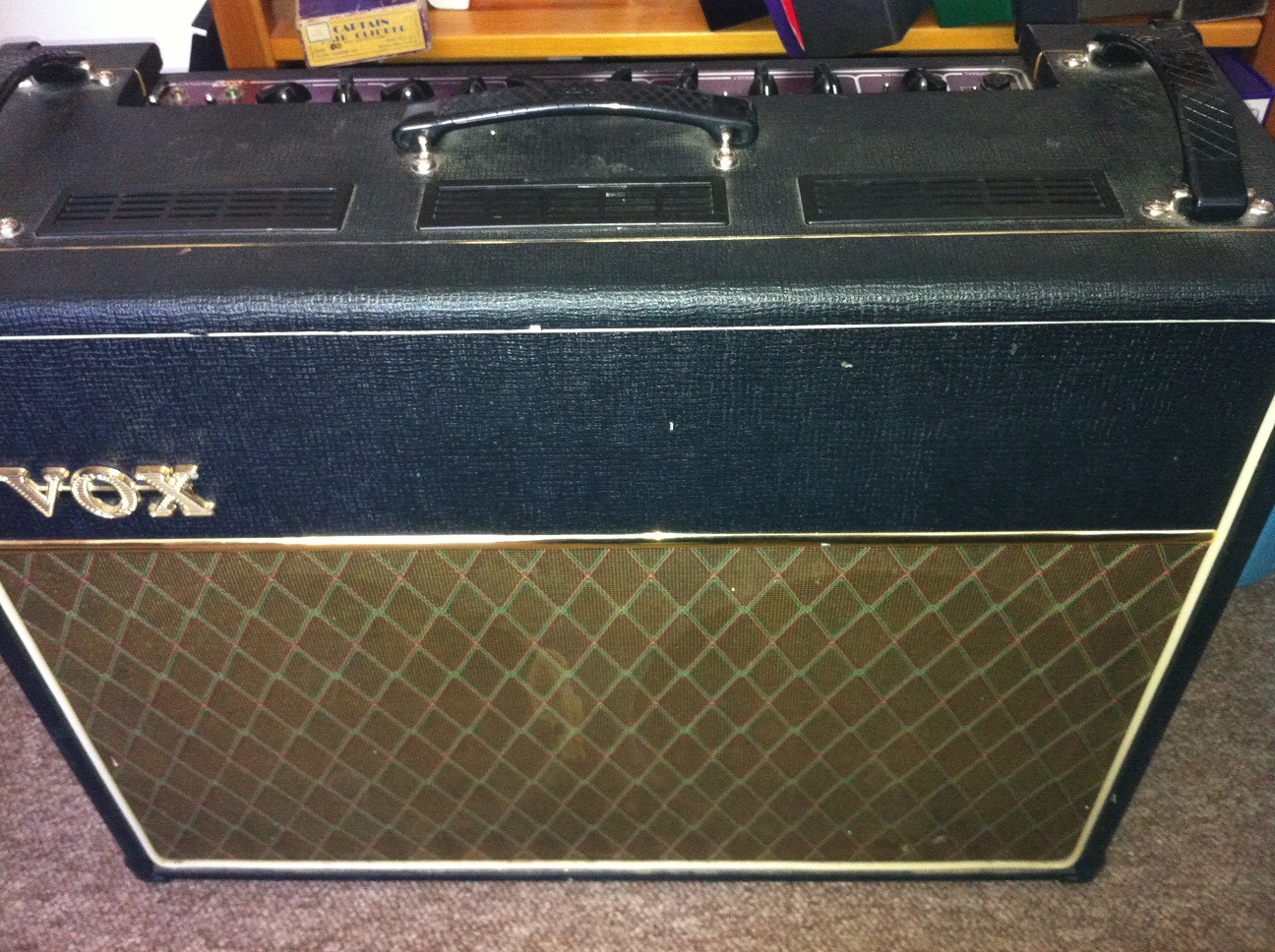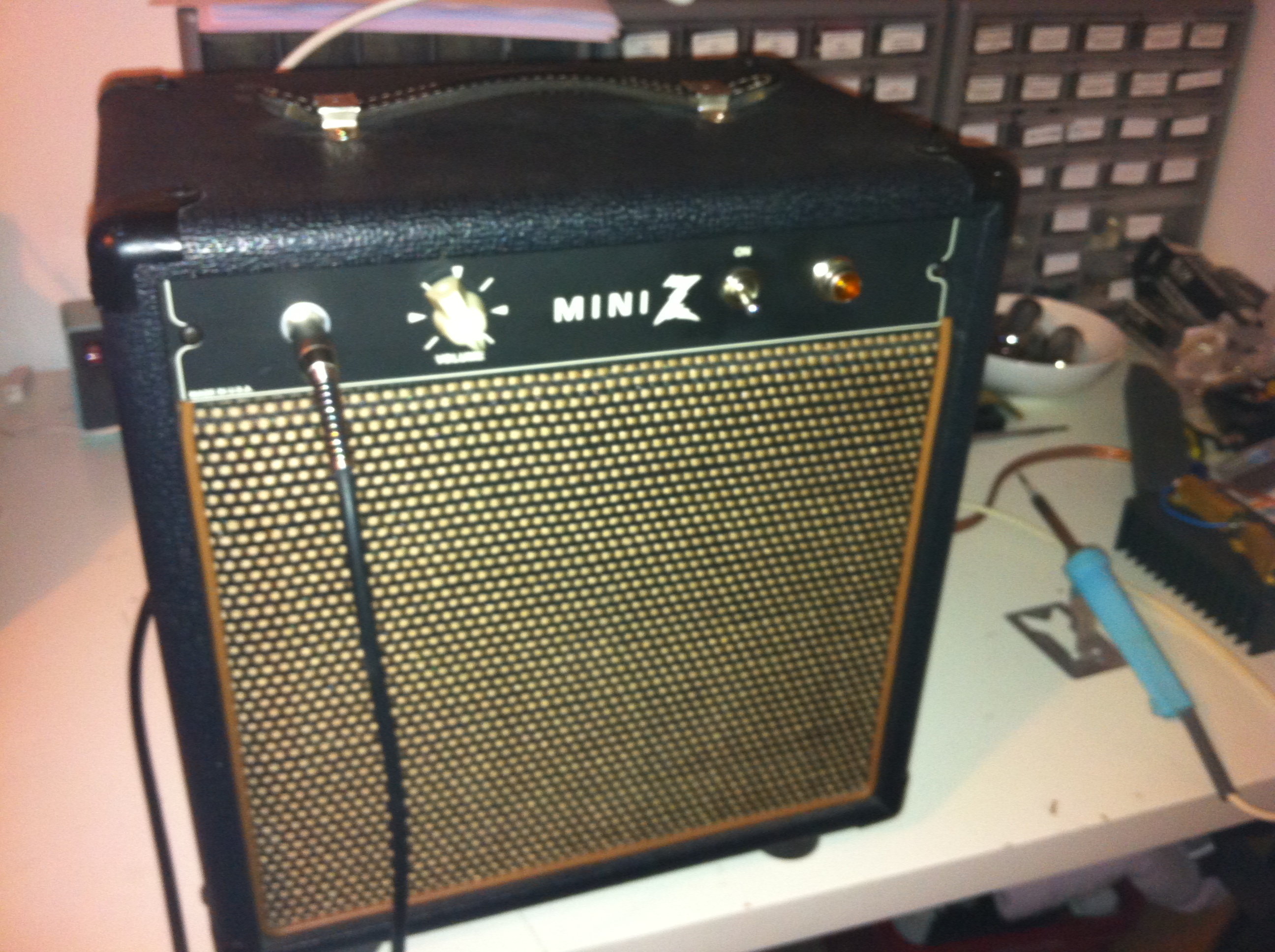This Mesa Boogie repair was one of the nicest amps to play, but one of the longest repairs of the year I’m afraid!
In this case, the Maverick had a problem with the channel switching. After a few minutes the rhythm channel would increase in volume, and the lead channel would bleed through an unpleasant fuzzy distortion. The fault was fixed by the opto-isolator replacement in the switching circuit.
It’s never a good thing to discover that your amp is faulty, but a broken amp is particularly bad news for owners of Mesa Boogie amplifiers. This is because Mesa Boogie construct their amplifiers in a way that lengthens the repair time.
The reason is that the amplifier is soldered into position on all four sides. Any changes to the board must be done after completely dismantling the amp (taking 30minutes each time). If several things are replaced in a more complex job, then the costs quickly mount up. Before I add to any myths, it’s NOT because the amplifier is PCB, it’s perfectly possible to make a PCB amp that’s easy to repair! It’s also possible to make a Point to Point amp that’s a nightmare to repair as well – I’ve seen them!
Anyway, what an absolutely great tone this Mesa Boogie has when it’s cranked. It’s completely unlike the rest of the Dual Rectifier series. The Black Widow speakers in this particular combo are brilliant speakers.
If you have a mesa boogie repair, please do get in touch and we’ll talk it through.

